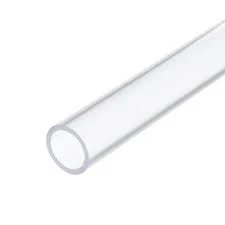Nov . 22, 2024 11:50 Back to list
ppr water pipe
The Future of Water Distribution Understanding PPR Water Pipes
In modern construction and plumbing, the materials used for water distribution play a crucial role in ensuring efficiency, safety, and longevity. One of the most promising materials emerging in this field is Polypropylene Random Copolymer (PPR) pipes. Known for their durability, flexibility, and resistance to corrosion, PPR water pipes are quickly becoming a preferred choice for both residential and commercial plumbing applications.
What Are PPR Water Pipes?
PPR pipes are made from a type of thermoplastic polymer that is specifically designed for hot and cold water supply systems. The “random copolymer” in its name indicates that the polypropylene chains have a random arrangement, which enhances the material’s overall strength and reduces the risk of failure under pressure. These pipes can carry water at varying temperatures, making them suitable for diverse plumbing needs.
Advantages of PPR Pipes
1. Corrosion Resistance Unlike traditional metal pipes that are susceptible to rust and corrosion, PPR pipes are immune to these issues. This characteristic not only extends their lifespan but also ensures the quality of the water being supplied. In areas with high mineral content or aggressive water conditions, PPR pipes prove to be a robust solution.
2. Thermal Insulation PPR pipes have excellent thermal insulation properties. This means that they can effectively maintain the temperature of the water, whether it is hot or cold. Such insulation helps reduce energy costs associated with heating water, making PPR pipes a more energy-efficient choice.
3. Lightweight and Easy to Handle Compared to metal piping options, PPR pipes are considerably lighter, making them easier to transport, handle, and install. This can lead to reductions in labor costs and installation time on construction projects.
ppr water pipe

4. Joint Integrity PPR pipes can be seamlessly welded using heat fusion techniques. This method creates joints that are as strong as the pipe itself, eliminating weak points that may lead to leaks in traditional jointing methods. This strength further enhances the reliability and longevity of the entire water distribution system.
5. Cost-Effective Although the initial investment in PPR piping may be higher compared to other materials, the long-term savings in maintenance and energy costs, along with the reduced risk of leaks and repairs, make it a cost-effective solution over time.
Applications of PPR Water Pipes
PPR pipes are versatile and can be used in various applications. They are widely used in residential plumbing for supplying hot and cold water to kitchens and bathrooms. Additionally, PPR is popular in commercial buildings, hospitals, and schools where reliable water distribution is essential. Furthermore, PPR pipes are increasingly being adopted in industrial processes where water quality and temperature control are critical.
Conclusion
As we move toward a future that emphasizes sustainability and efficiency, PPR water pipes represent an innovative solution for water distribution challenges. Their unique properties make them a reliable choice for both new construction projects and renovation works. By adopting PPR piping systems, builders and homeowners can benefit from long-lasting, environmentally friendly, and economically advantageous materials.
The transition to PPR pipes not only meets the current demands of plumbing systems but also sets the stage for advancements in water management. As industries continue to grow and evolve, PPR water pipes will likely play a pivotal role in enhancing the safety and quality of our water supply infrastructure. Investing in PPR technology today means a more sustainable and efficient future for water distribution tomorrow.
-
High-Quality PPR Pipes and Fittings Durable ERA PPR & PVC PPR Solutions
NewsJul.08,2025
-
Black HDPE Cutting Board - Durable, Non-Porous & Food Safe HDPE Plastic Cutting Board
NewsJul.08,2025
-
High-Quality CPVC Panel Durable HDPE & PVC Panels Supplier
NewsJul.08,2025
-
Double PE Welding Rod Supplier - High Strength, Durable & Versatile Welding Solutions
NewsJul.07,2025
-
High-Quality PVC-O Pipe Supplier Durable 75mm PVC Pipe & Connections Leading PVC Pipe Company
NewsJul.07,2025
-
HDPE Drainage Pipe Supplier – Durable & Corrosion-Resistant Solutions
NewsJul.06,2025

